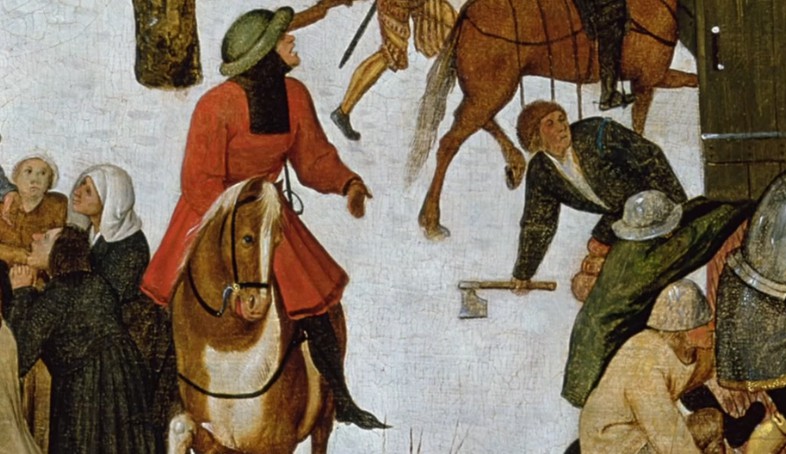But, in Flanders, in the Low Countries,
但在佛兰德斯 在低地国家
a different artist would crowd his landscapes with people.
另一位艺术家用人物来使风景画变得丰满
In 1565, the Flemish master Pieter Bruegel painted a set of landscapes which
在1565年,佛兰德大师 老彼得.勃鲁盖尔画了一幅风景画
reinvented that traditional medieval cycle,
重现了传统的中世纪时期
the labours of the months.
数月劳作的劳工们
These, of course, are on an epic scale.
当然 这是以宏大的规模完成的

But, here, there's not a single feudal lord to be found.
但在这里 没有一个是封建领主
The man who commissioned them
驱使他们劳作的人
came from bustling, commercial Antwerp,
来自繁华而又商业化的安特卫普
a merchant called Nicolaes Jonghelinck
这位商人叫做尼古拉斯.扬格林克
who wanted them to decorate the grand dining space of his suburban villa.
他想让他们装修自己在郊区别墅的豪华餐厅
Perhaps this was Jonghelinck's way
可能这是扬格林克
of identifying with the ordinary folk,
所认为的普通人的生活
because what we have, for the first time,
因为在一开始 我们拥有的就是
is a credible vision of country society,
一幅乡村社会图景
real villages with people working and playing together.
真实的乡村 还有人们在其中一同工作玩耍
Bruegel himself was no brush-wielding yokel.
勃鲁盖尔自己不是一个不会写字的庄稼汉
He was learned and well-travelled.
他很有学识 游历四方
He'd taken a trip over the Alps to Italy, sketching as he went.
他曾越过阿尔卑斯去意大利旅行 同时画草图
Some of those Alpine peaks appear, incongruously,
有些阿尔卑斯山峰出现在了他所描绘的
alongside depictions of his low-lying, Flemish home.
地势低洼的佛兰德斯故乡旁边 很不和谐
But that only increases the telescopic sense of deep space
但这也只是为了增加外层空间的景深感
Bruegel gives us, using those tree lines
通过这些林木线和远方山峰的曲线
and the curve of the peaks to send our vision plunging,
勃鲁盖尔把我们的视觉向下引导
like the flight of that bird,
就向那只鸟的飞行方向一样
from huge vistas to the smallest detail.
从宏伟的远景拉到最细节的部分
Along with that optical drama,
除了这种戏剧性的视觉效果外
we get another kind of perspective,
还有另一种视角
a philosophical confrontation
伴随着我们与大自然本身关系的
with our relationship to nature itself -
一种哲学上的冲突
unsentimental, rugged, which demands a closer look.
无情又曲折 需要细细观察












